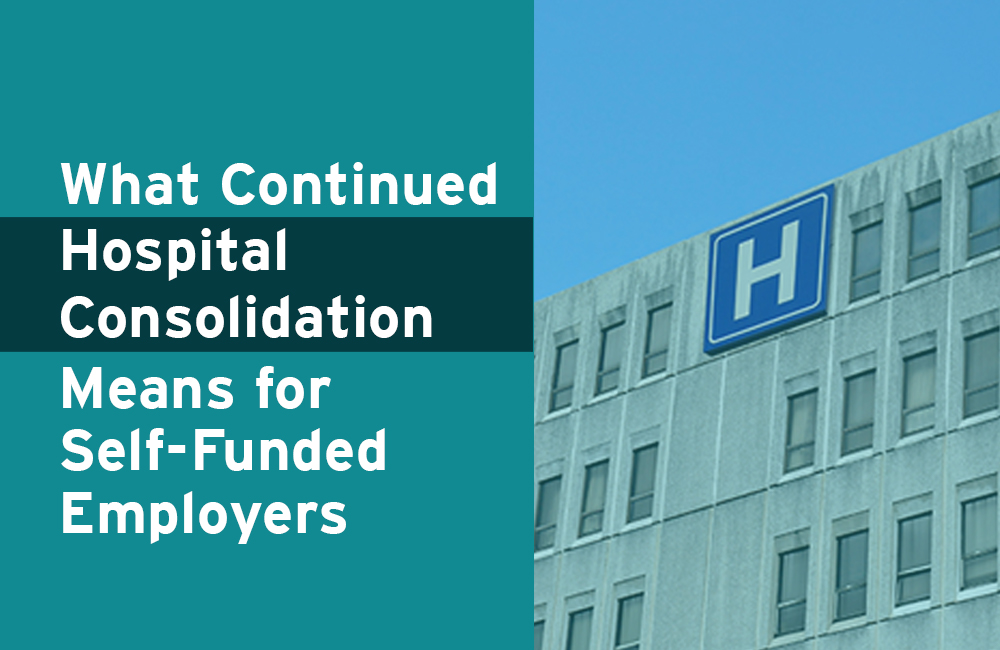
What Continued Hospital Consolidation Means for Employers
Hospital consolidation – when two or more providers merge – has become a growing concern among employers and other health care purchasers, and its presence looms large after facing the fallout of COVID-19. However, hospital consolidation didn’t arrive with the pandemic, nor will it leave with it. External Link. Opens in new window..
The coronavirus may have led to decreased health care spending by consumers and declined revenue for some providers (which left those operating independently especially vulnerable to being bought out). Still, provider consolidation was growing at a record rate before the virus.
Consolidation Runs Rampant
In fact, hospital consolidation grew every year from 2009-2015. External Link. Opens in new window., more than doubling over that time period. The pandemic has only exacerbated hospital consolidation, which doesn’t just happen with struggling providers. Only 20% of mergers in 2018. External Link. Opens in new window. involved a “financially distressed” partner, and 19% of the sellers (or smaller partners) had net annual revenues of more than $500 million.
Consumers’ Chief Concern: High Prices
Dr. Marty Makary himself, a self-proclaimed optimist, recently asserted that his biggest fear for the future of health care was hospital consolidation. So why is it such a big deal? It tends to result in higher prices. External Link. Opens in new window..
Although hospital consolidation can lead to lower operating costs for hospitals when they merge, their service prices actually go up. External Link. Opens in new window.. And nearby, competing hospital systems raise their prices, too. External Link. Opens in new window.. But employers don’t just care about price – they care about the quality of care their employee families receive. Unfortunately, provider consolidation has not led to improved quality. External Link. Opens in new window.. Hospital competition – not consolidation – leads to improved quality of care.
Using Hospital Consolidation to Lower Prices
The Alliance has thought about, and dealt with, hospital consolidation over the past 30 years. And we’ve found a path forward. We’re using hospital consolidation to instead lower prices.
The Alliance has put contracts in place to protect employers from sudden increases in price that can result from hospital mergers and acquisitions. We also require due notice of ownership changes within our contracts. When hospitals merge, The Alliance uses it as an opportunity to revisit its contracts with those providers. We can then either keep those contracts intact, renegotiate them for lower rates, or terminate the contracts altogether. Typically, providers work with us to accept new, lower rates to ensure they can still serve the communities in which they operate.
For example, one of our providers recently doubled in size due to hospital mergers, and they called us to ask the best way to move forward with new contracts. Those negotiations actually led to a reduction in price at every single facility involved in the merger.
And having access to a large network of providers, like that of The Alliance, remains another good line of defense against rising costs (and out-of-network bills) from growing hospital consolidation.
Working with – Not Against – Consolidation
All this to say: although the trend of hospital consolidation shows prices go higher, it isn’t ubiquitous. The Alliance understands that providers want to do what’s right for the employers and patients in their communities, and we use that knowledge (and our 30 years of self-funding experience) to craft our contracts. Larger insurers don’t have the same protections built into their contracts, forcing most employers to accept rising costs, no matter the reason.
The Alliance creates a dialogue with well-intentioned providers and leverages our not-for-profit status to create better rates for employers in their communities. Providers care about the people they serve; The Alliance simply creates contracts that hold them accountable.
Using Unique Contracting Methods to Protect Employers
In conclusion, The Alliance has a long, rich history of having legal language in our contracts that protects self-funded employers from hospital consolidation. We talk to providers about how consolidation will affect our employers and their communities, and – driven by our core tenant of transparency – we share that information with employers.
Although the pandemic has increased the speed and magnitude at which hospital consolidation happens, The Alliance has been aware of it for quite some time. We’ve seen our fair share of mergers since 1990, and whether by renegotiating better rates or keeping them on separate contracts (because the consolidation wouldn’t be to our employers’ benefit), we create unique contract provisions to protect our employers from the fallout of hospital consolidation.
To learn more about how to protect your business against rising health care costs, please contact our Business Development team.








